Distance Learning Module 7 - Transboundary Resource Management
MANAGEMENT OF WATER FLOW
- The flow of river waters must be managed and channeled into appropriate channels for the benefit of all the different stakeholders (Tables 7.1, 7.2).
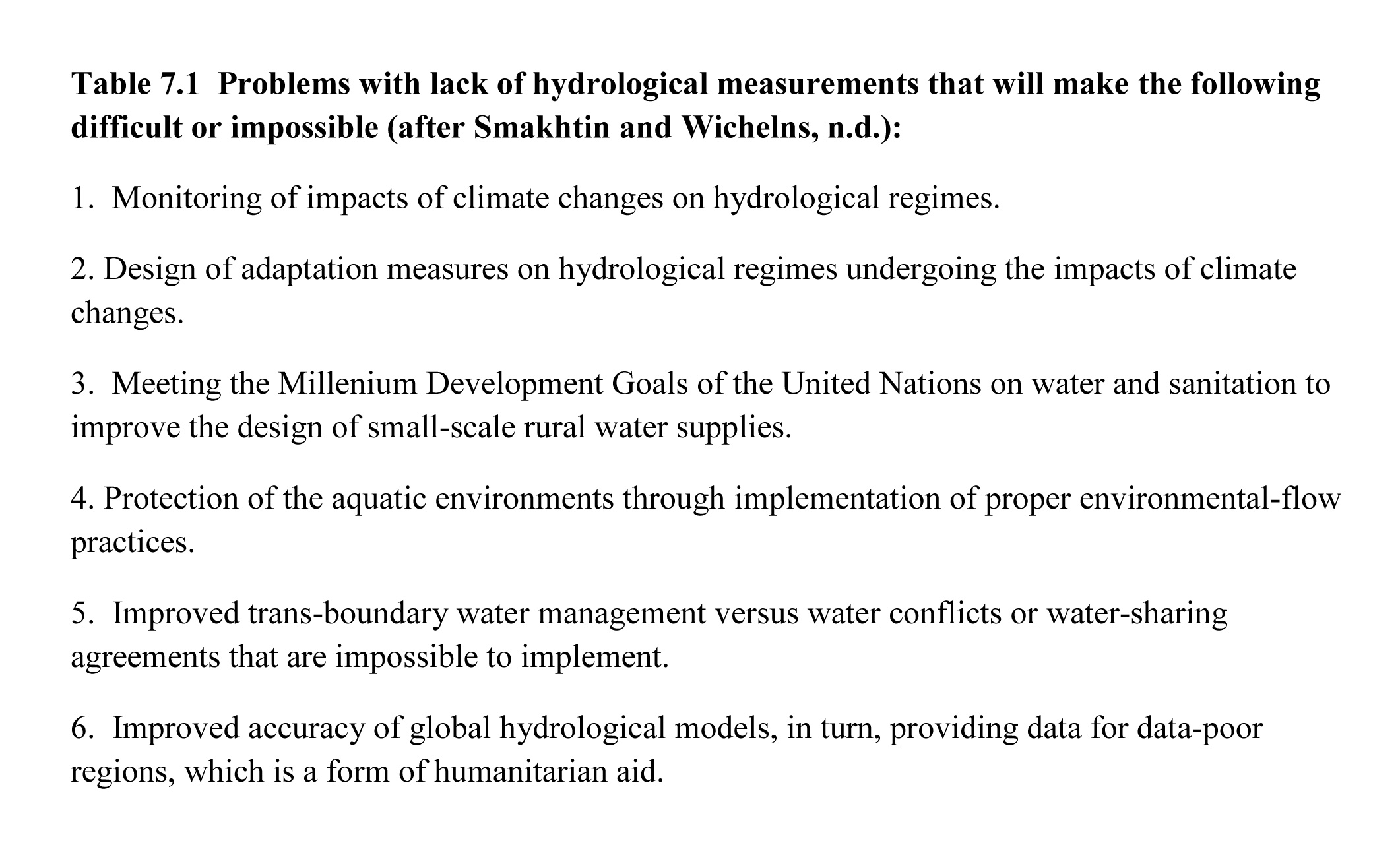
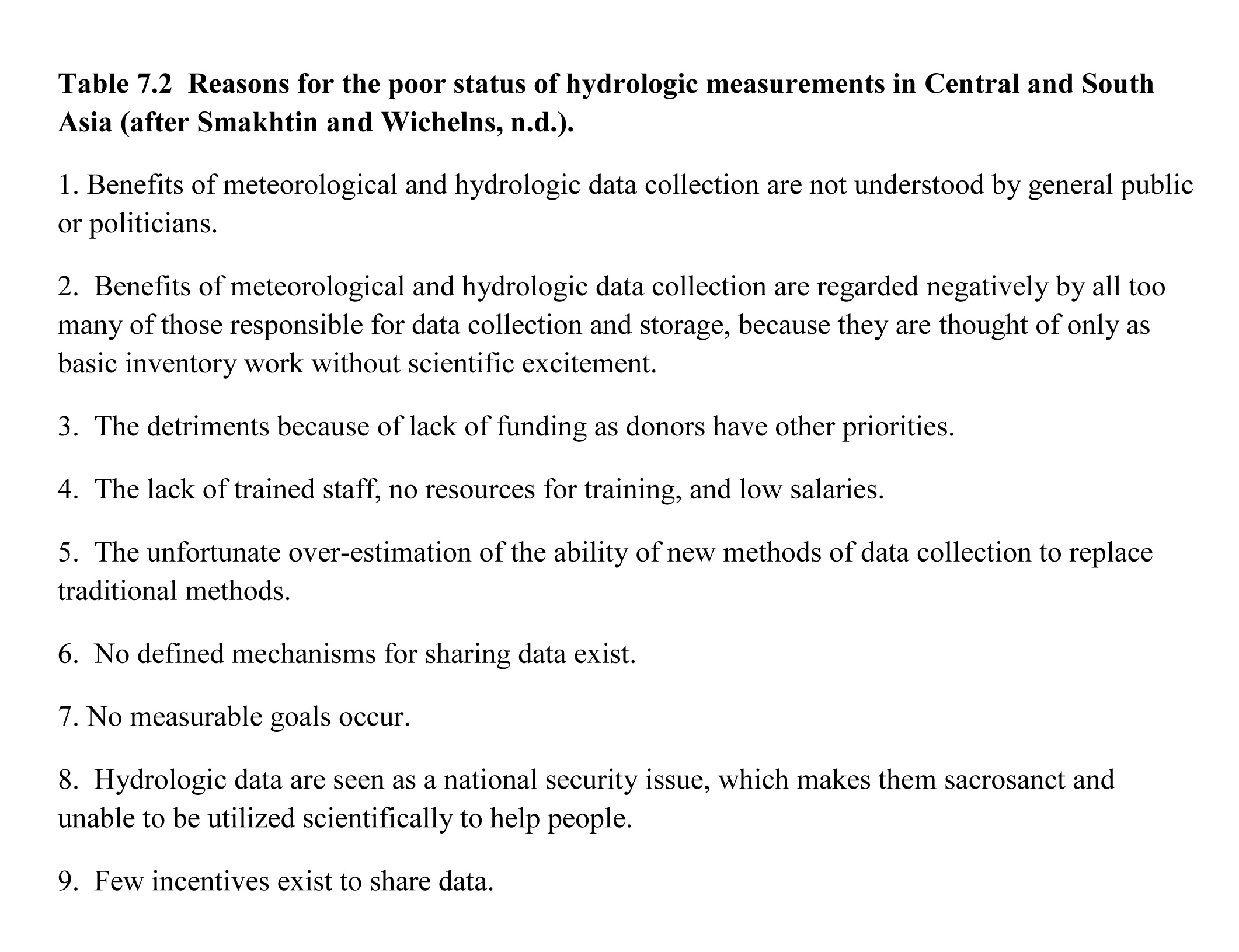
- Where possible, upland watersheds must be protected from aquifer mismanagement, deforestation, overgrazing, over pumping, etc. (Table 7.2).
- Practically every development challenge of the 21st Century requires great attention to water resources – food security, managing rapid urbanization, energy security, environmental protection, adapting to climate change (Table 7.5).
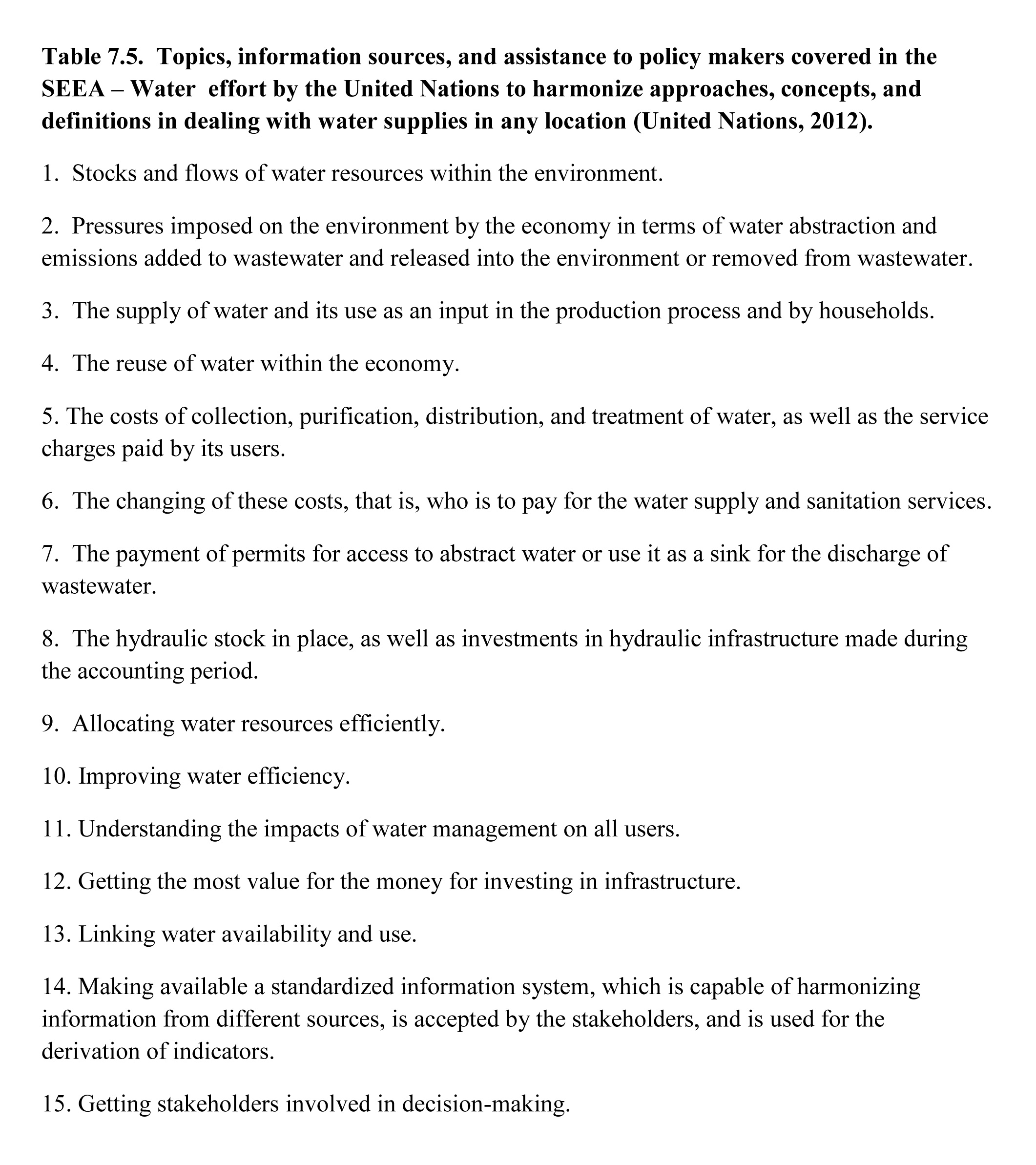
- Joint hydrology activities have been recommended for Afghanistan with some surrounding countries (Tables 7.3, 7.4).
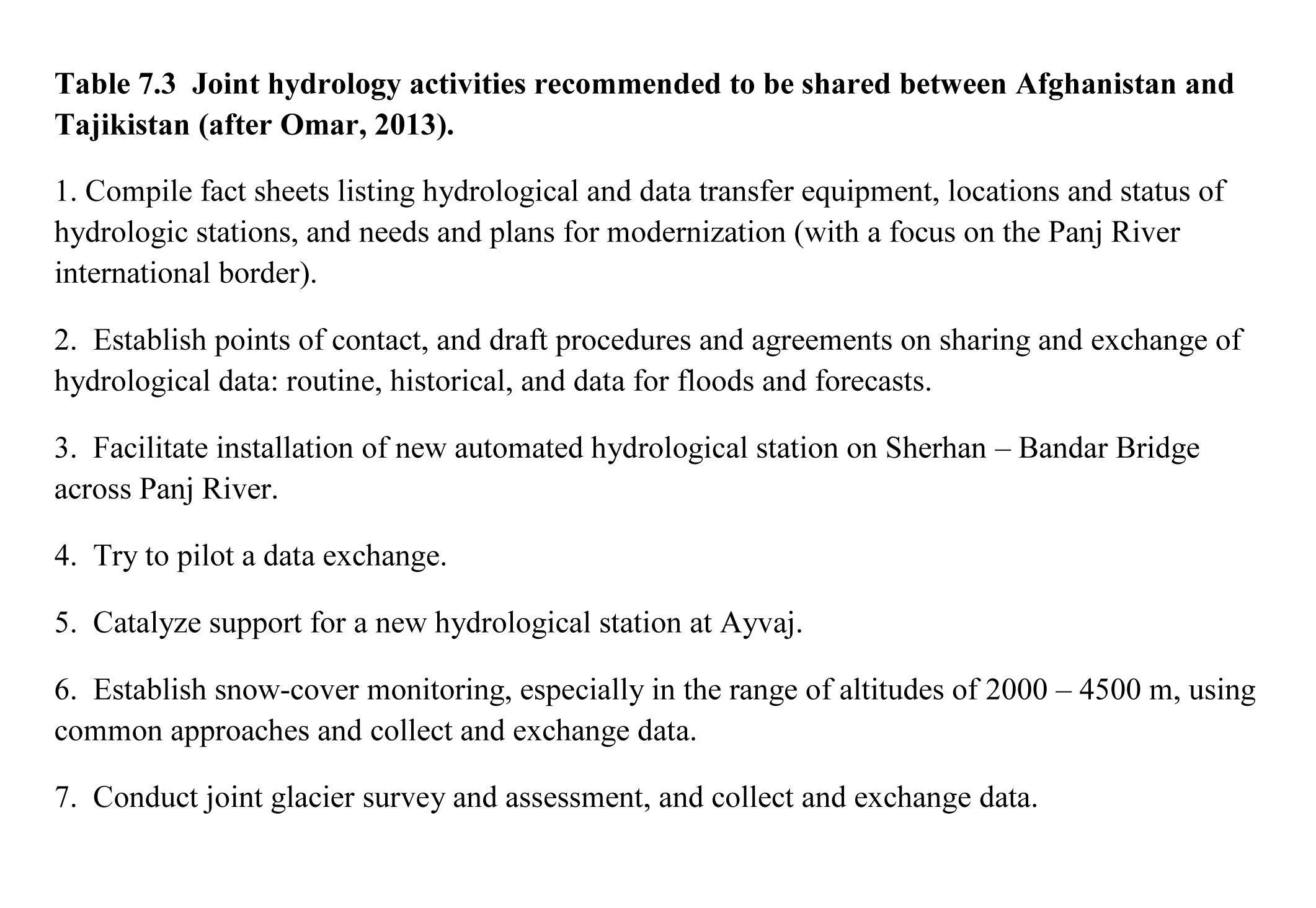
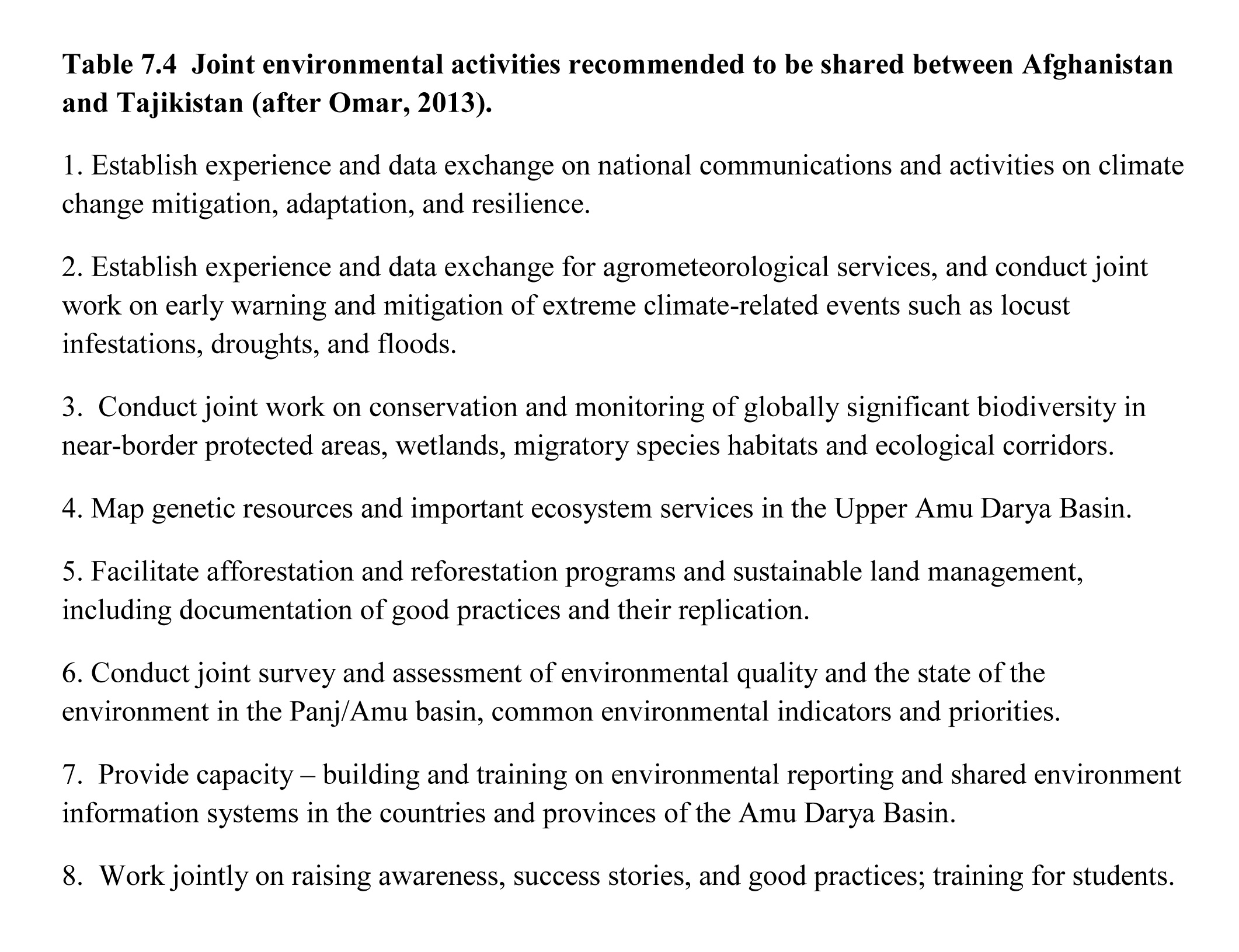
- Advanced water balance accounting systems are now available to enable highly competent measurement and accounting for all incoming and outgoing water usages so that far greater water efficiencies can be obtained (Tables 7.6, 7.7).
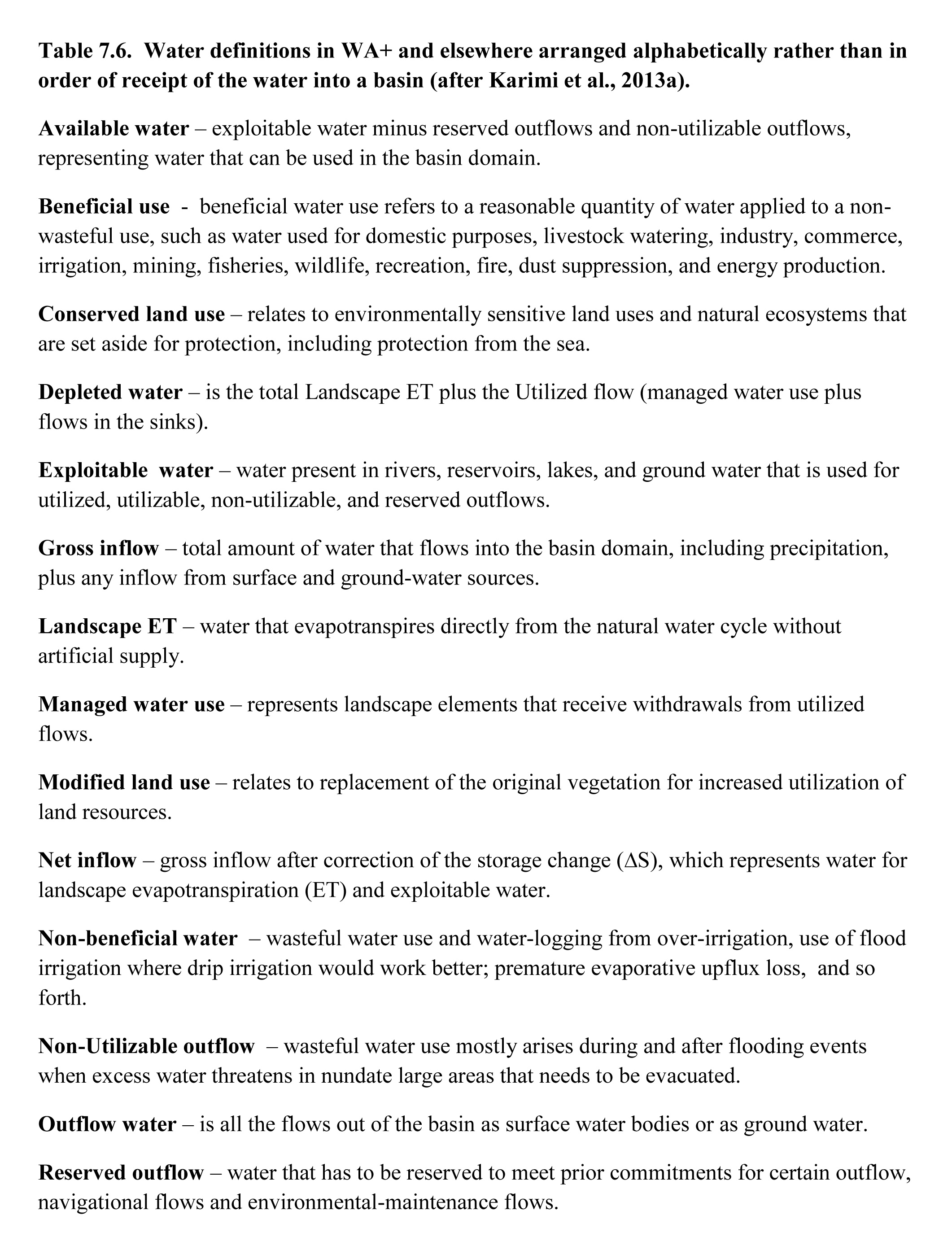
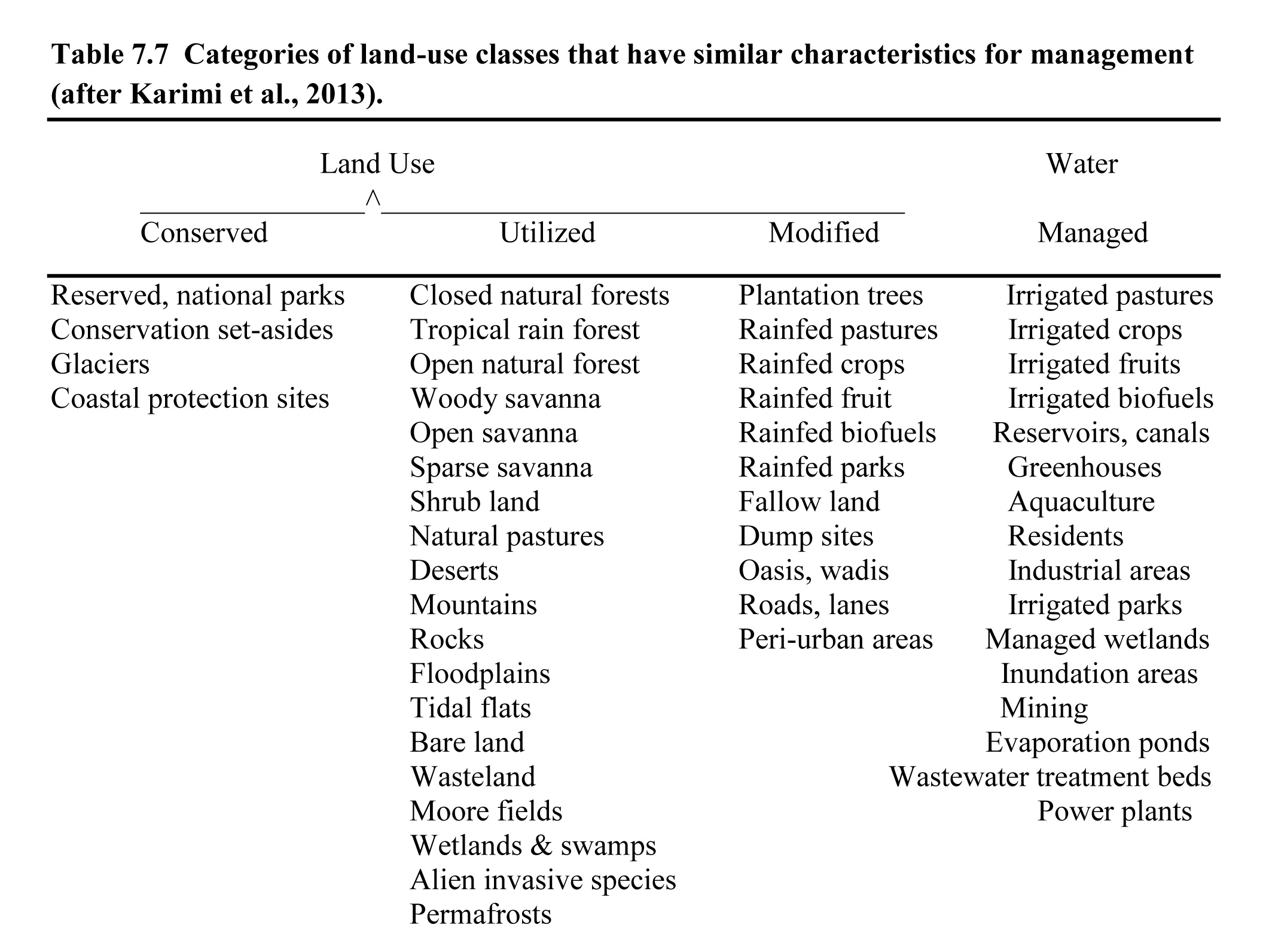
- One method for water accounting is to calculate all the many usages of water, and its different activities through the blue water, green water, and gray water ideas (Figures 7.1 & 7.2).
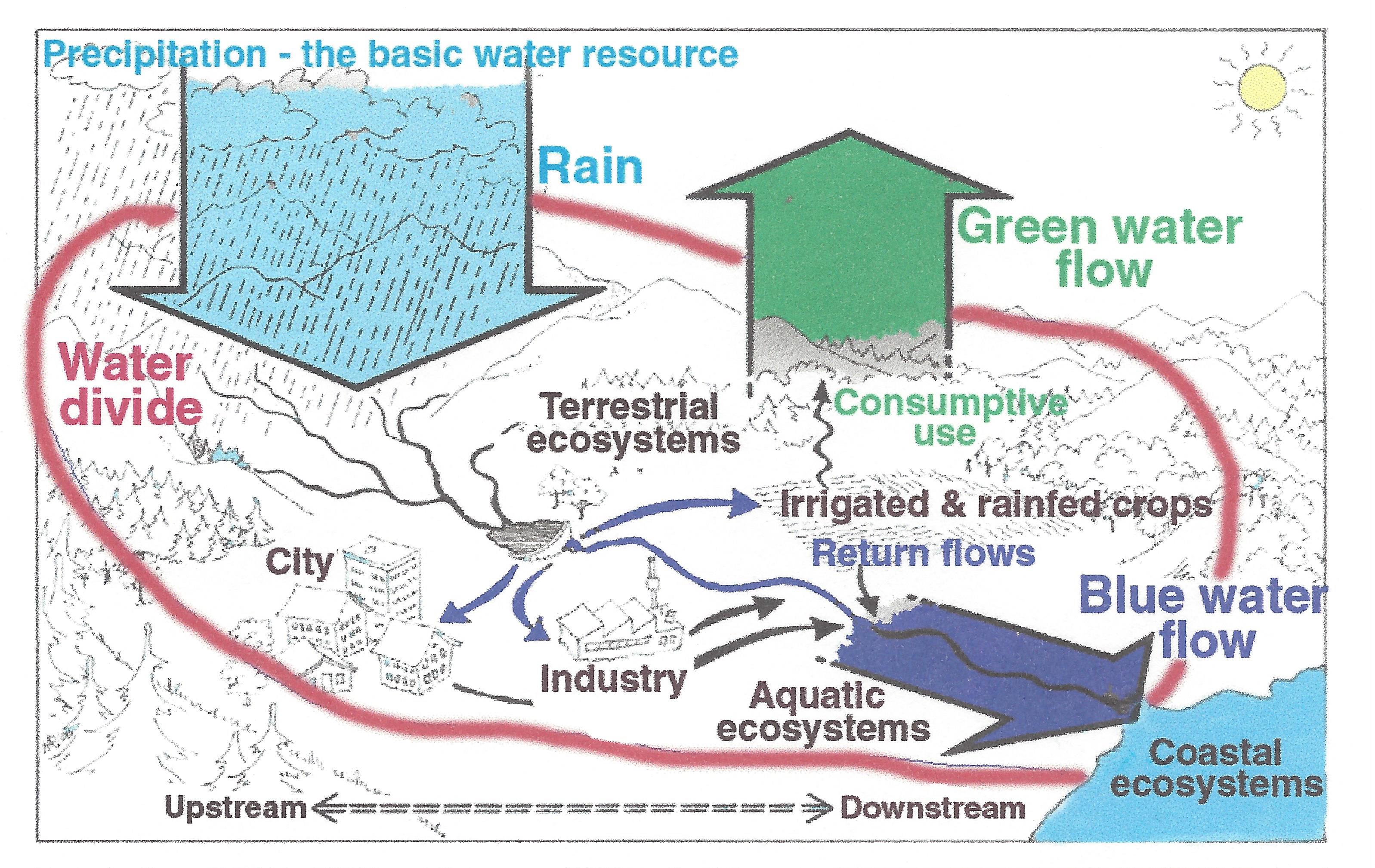 Figure 7.1. Conceptual cartoon model of flows of blue, green, and gray water in a drainage basin. Precipitation over an area (large, light-blue arrow) provides the runoff (blue-water flow, BWF), which is partitioned to feed cities, industry, agriculture, and rivers (after Falkenmark and Lannerstadt, 2005) . Part of this BWF is consumed in plant production, with plentiful transpiration from leaves and evaporation from wet surfaces (green-water, or vapor flow), which are consumptive uses. Gray-water flow can be return flow of polluted water. Return flow can also be clean.
Figure 7.1. Conceptual cartoon model of flows of blue, green, and gray water in a drainage basin. Precipitation over an area (large, light-blue arrow) provides the runoff (blue-water flow, BWF), which is partitioned to feed cities, industry, agriculture, and rivers (after Falkenmark and Lannerstadt, 2005) . Part of this BWF is consumed in plant production, with plentiful transpiration from leaves and evaporation from wet surfaces (green-water, or vapor flow), which are consumptive uses. Gray-water flow can be return flow of polluted water. Return flow can also be clean.
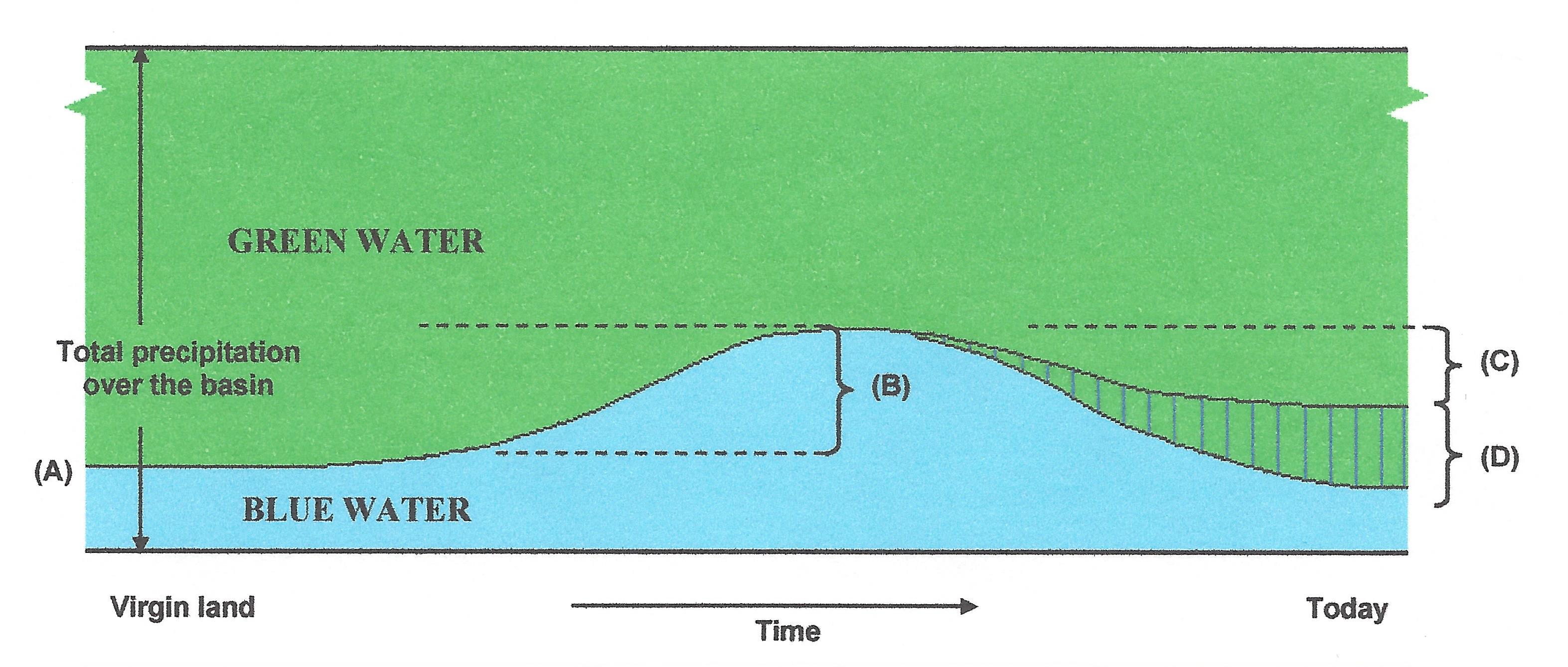
Figure 7.2. Blue- and green-water flow changes in world drainage basins over the past ~10,000 yr (after Falkenmark and Lannerstadt, 2005). The left (A) begins with undisturbed virgin lands back in antiquity as humanity began to take control of its environment. B represents the major forest clearance world-wide as humanity began wide-spread agriculture; C is the time of multiple general improvements of crops and agriculture, which resulted in decreased blue-water flows as plant growth increased. D with the shading lines is the time of increased consumptive water use, with increased irrigation from rivers and ground water, as well as increased evaporation from reservoirs (diagram is not to scale).
- The Water Accounting Plus (WA+) system is a high level accounting of all water locations and water processes in a country, first presented on a Water Resource Base Sheet where each different type of blue water is measured for each water year (Figure 7.3; Table 7.8).
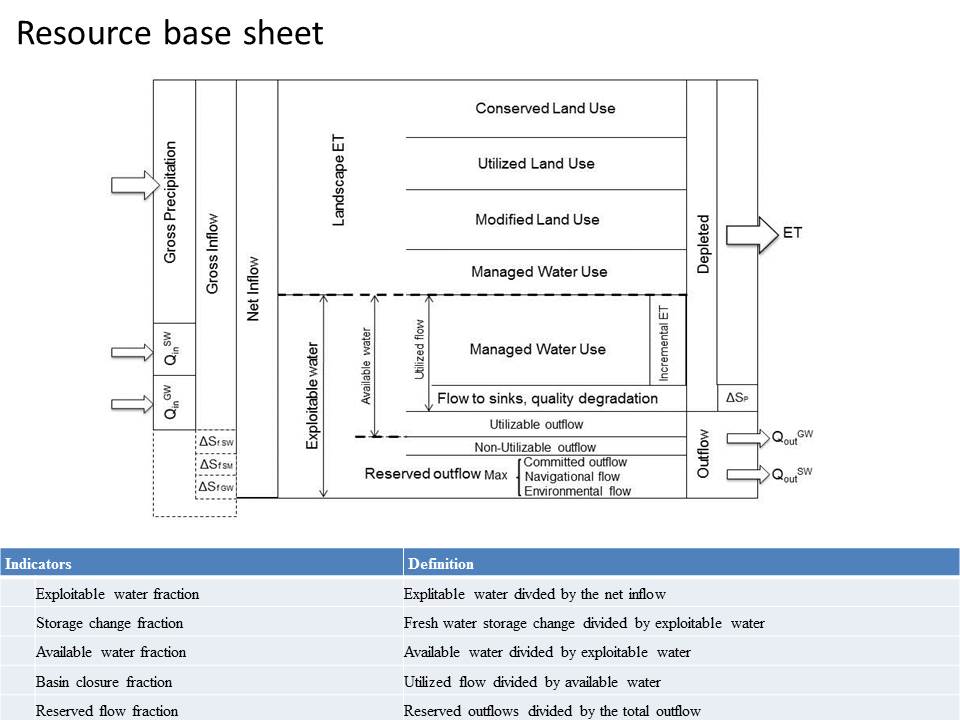
Figure 7.3. The resources base sheet is a schematic presentation that provides information on water volumes. The water inflows occur on the left of the diagram, the middle part provides information on how and through what processes the water is depleted in any particular domain, and on the right information on exploitable water and outflow reports are summarized (after Karimi et al., 2013).

- The evapotranspiration sheet accounts for that green water that is utilized in different places (Figure 7.4; Table 7.8).
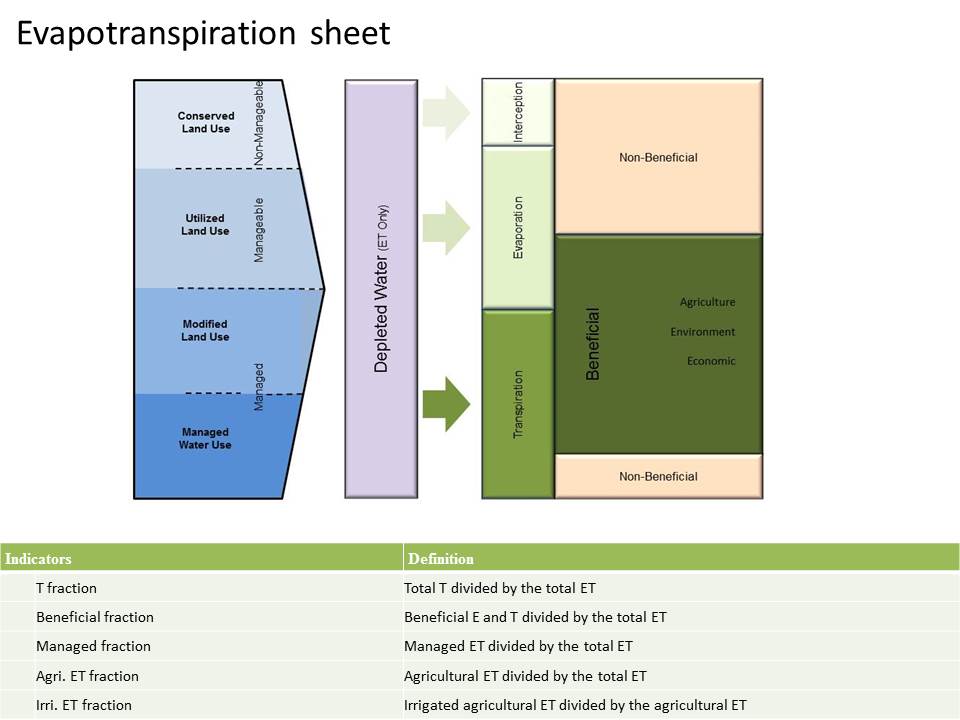 Figure 7.4. The evapotranspiration (ET) sheet describes the different parts of the ET processes that are managed, manageable capability, or non-manageable, and their beneficial and non-beneficial characteristics as the parts are subdivided into E, T, and interception (after Karimi et al., 2013).
Figure 7.4. The evapotranspiration (ET) sheet describes the different parts of the ET processes that are managed, manageable capability, or non-manageable, and their beneficial and non-beneficial characteristics as the parts are subdivided into E, T, and interception (after Karimi et al., 2013).
- The productivity sheet is the agriculture and other usages that the water produces (Figure 7.5; Table 7.8).
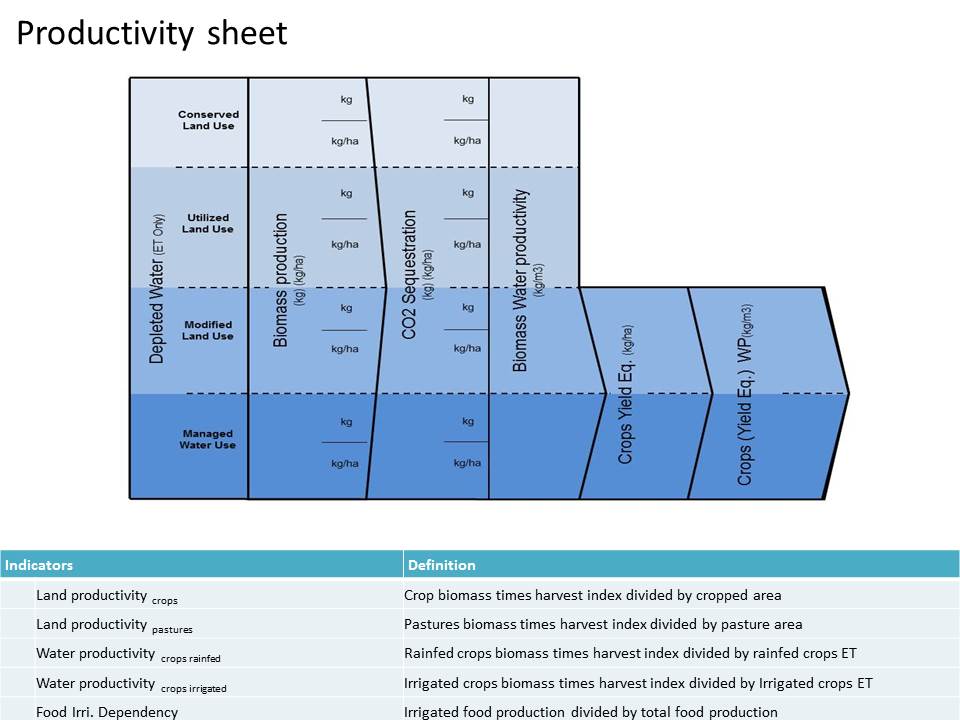 Figure 7.5 The productivity sheet describes the agricultural production per unit of water by reporting on the bio-physical land productivity and water productivity in the four land categories (after Karimi et al., 2013).
Figure 7.5 The productivity sheet describes the agricultural production per unit of water by reporting on the bio-physical land productivity and water productivity in the four land categories (after Karimi et al., 2013).
- The withdrawals sheet shows where all the water goes (Figure 7.6; Table 7.8).
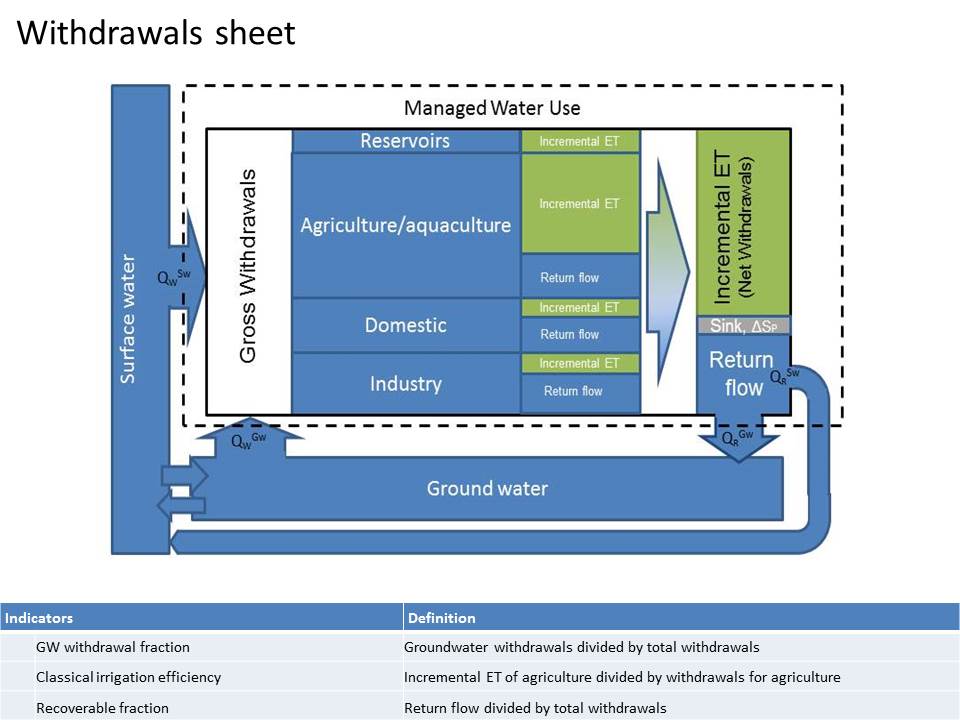 Figure 7.6 The withdrawal sheet differentiates between surface and underground water and the different types of managed water use (after Karimi et al., 2013).
Figure 7.6 The withdrawal sheet differentiates between surface and underground water and the different types of managed water use (after Karimi et al., 2013).
- Great water savings can be developed where comprehensive water management systems are set up and training in new methodologies is maintained (Table 7.9).
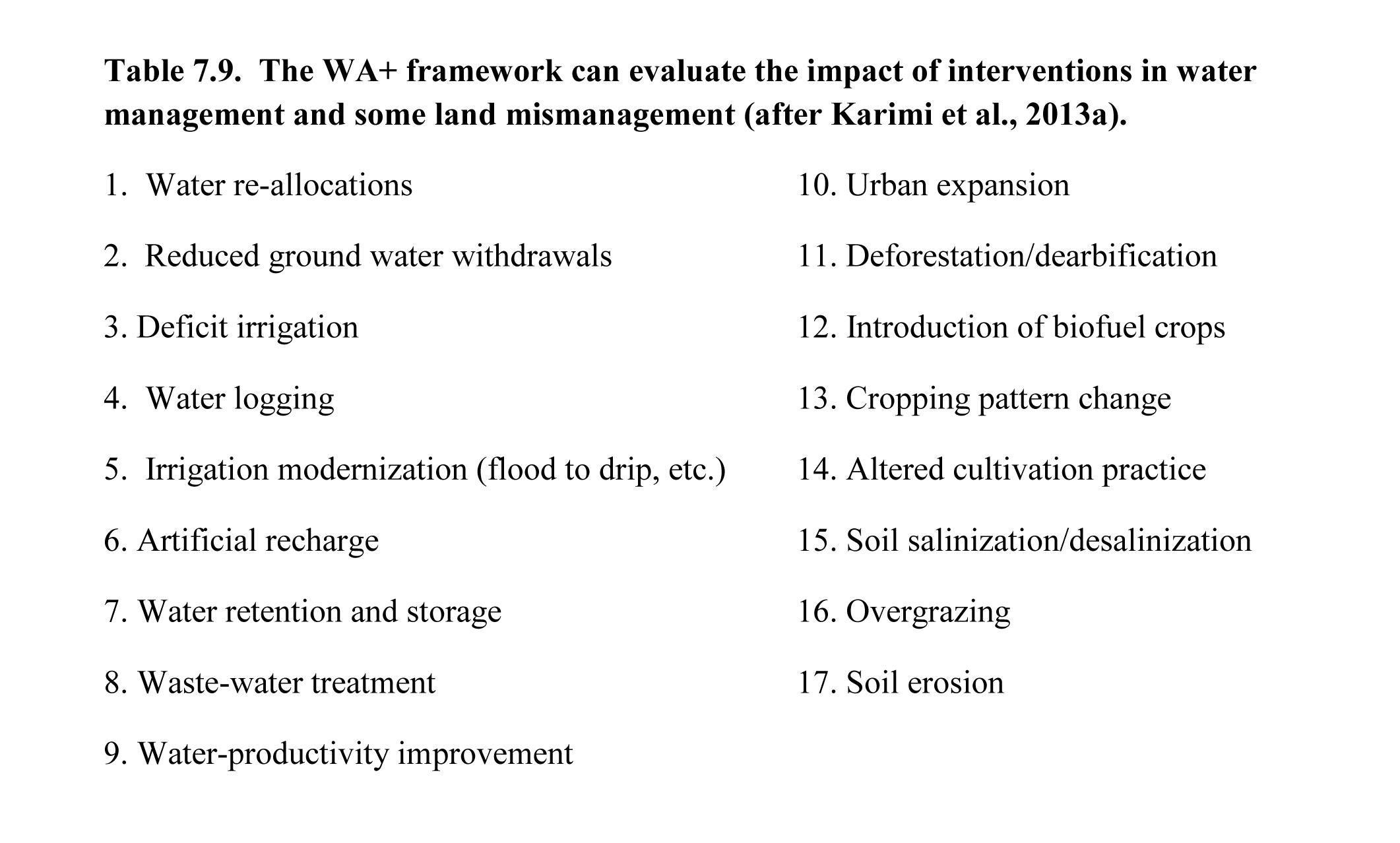
References:
- Karimi, P., W.G.M. Bastiaanssen, and D. Molden, 2013a. Water Accounting Plus (WA+) – a water accounting procedure for complex river basins based on satellite measurements. Hydrology and Earth System Sciences, 17: 2459-2472.
- Karimi, P., W.G.M. Bastiaanssen, D. Molden, and M.J.M. Cheema, 2013b. Basin-wide water accounting based on remote sensing data: an application to the Indus Basin.. Hydrology and Earth System Sciences, 17: 2473-2486.